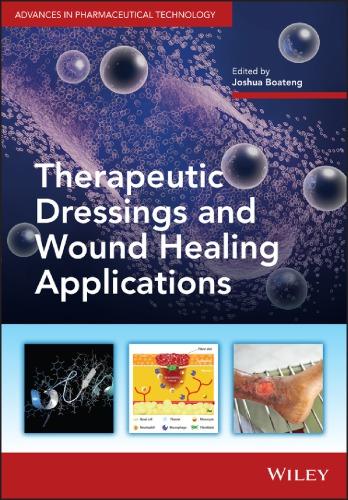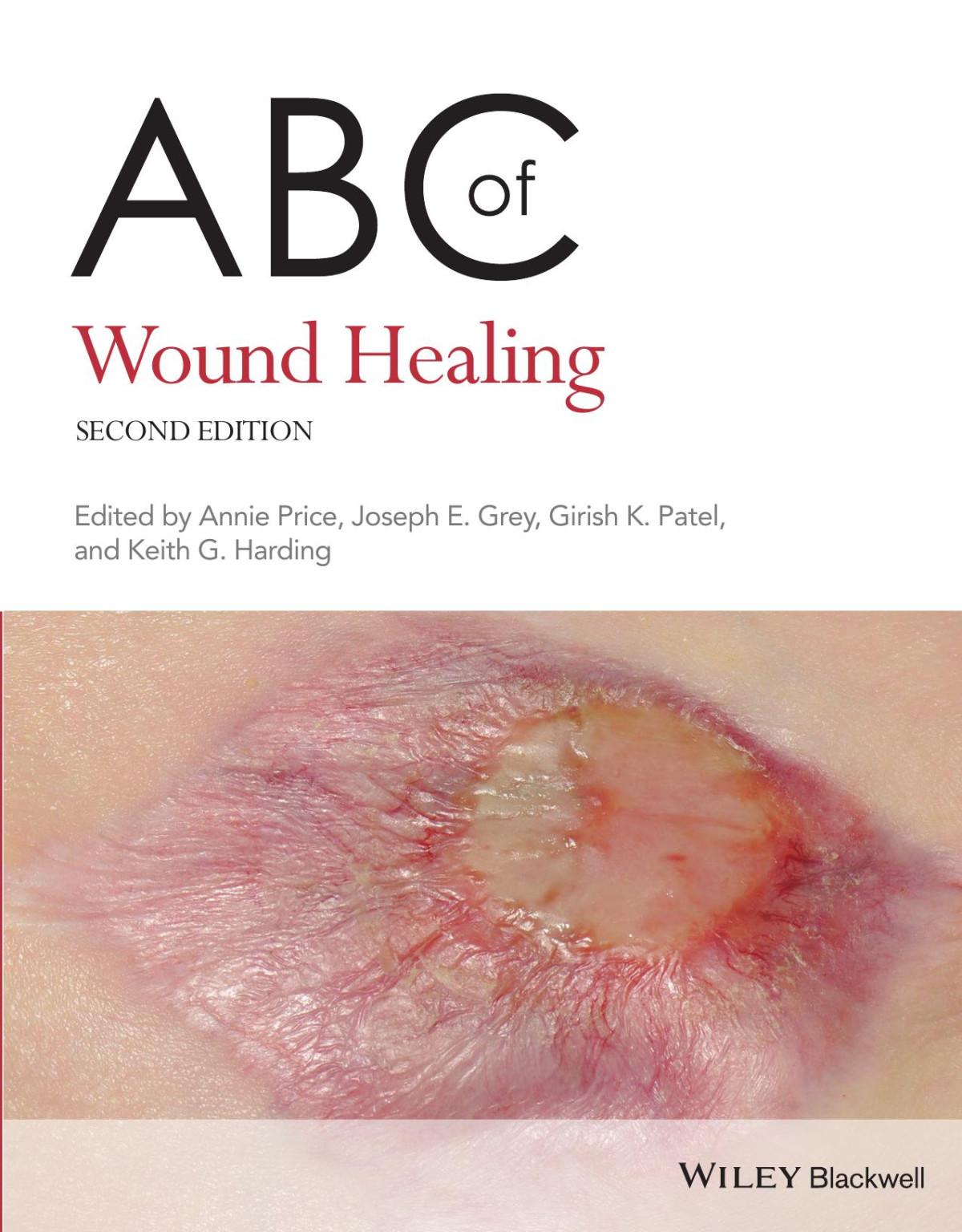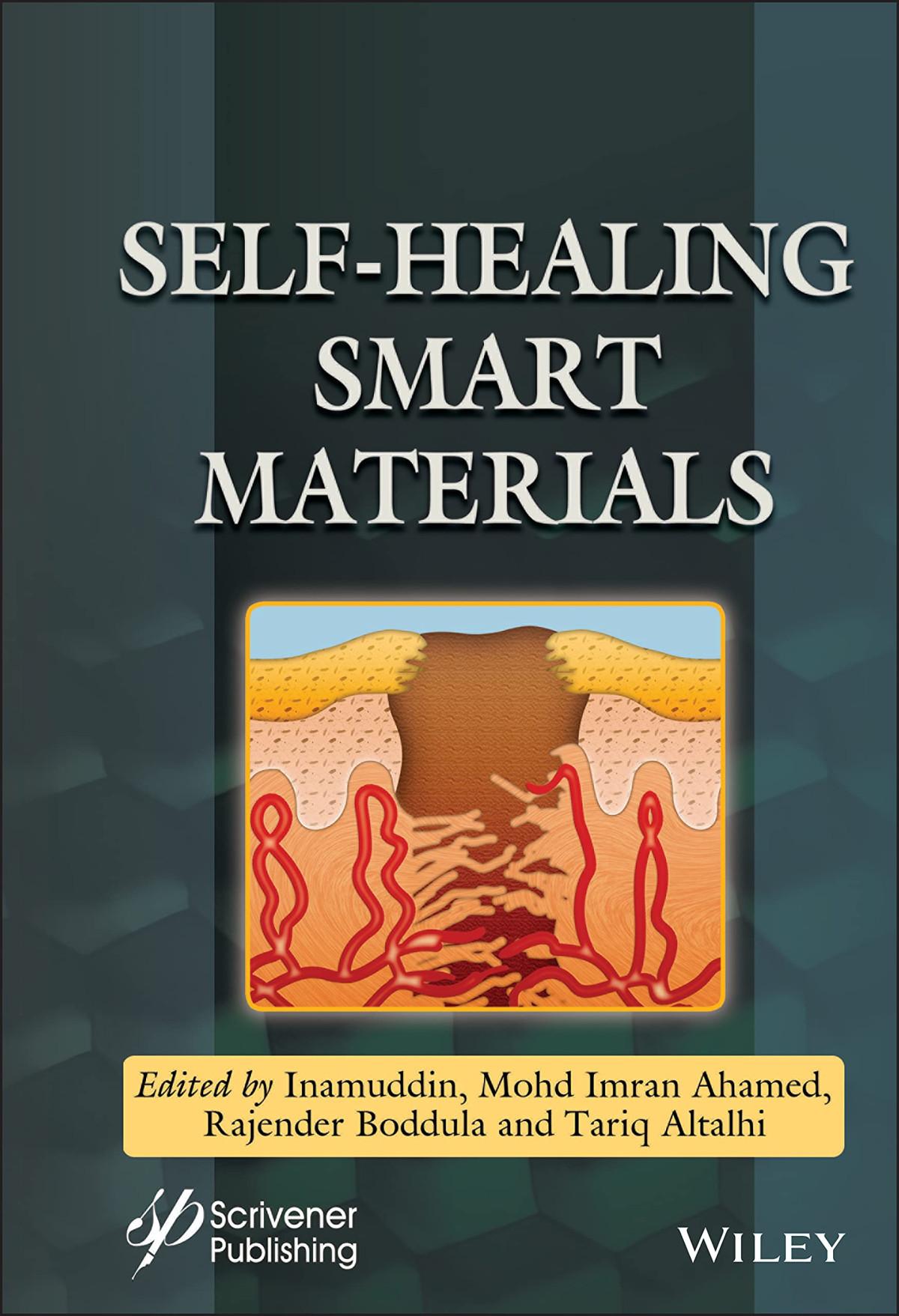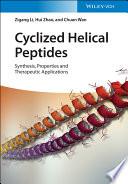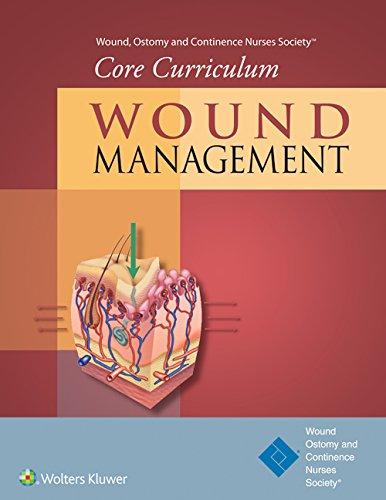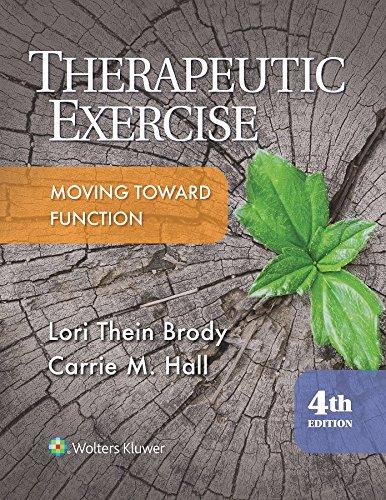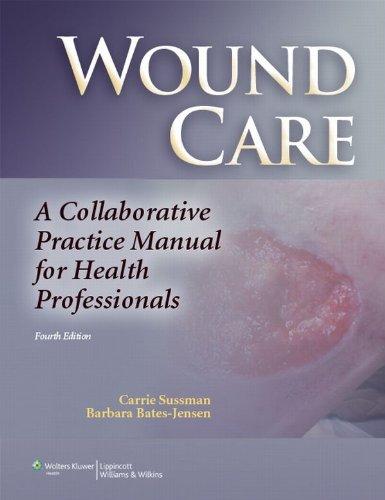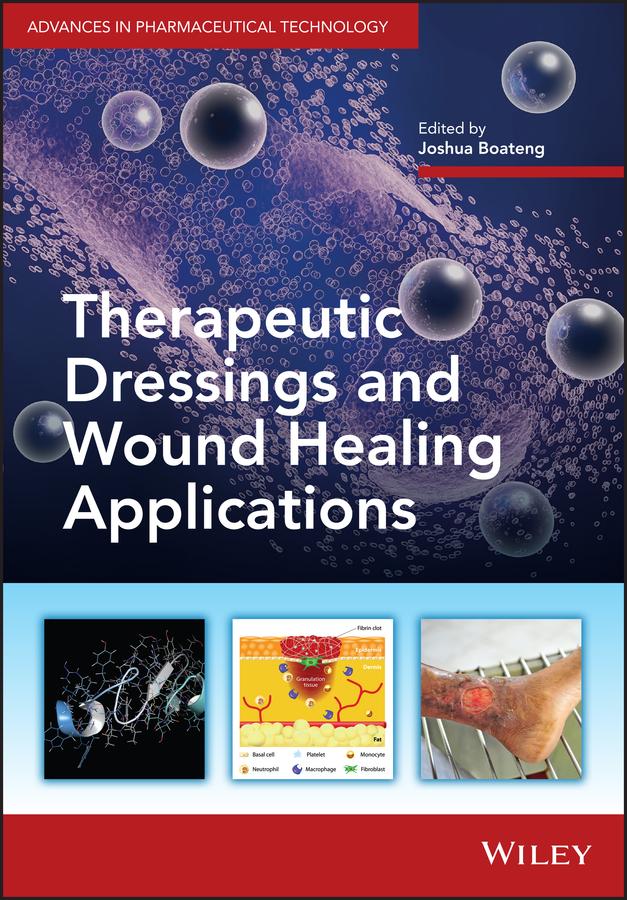Therapeutic dressings and wound healing applications Boateng
Visit to download the full and correct content document: https://ebookmass.com/product/therapeutic-dressings-and-wound-healing-application s-boateng/
More products digital (pdf, epub, mobi) instant download maybe you interests ...
ABC of Wound Healing 2nd Edition Annie Price
https://ebookmass.com/product/abc-of-wound-healing-2nd-editionannie-price/
Atlas of Wound Healing: A Tissue Regeneration Approach
1st Edition Soheila S. Kordestani
https://ebookmass.com/product/atlas-of-wound-healing-a-tissueregeneration-approach-1st-edition-soheila-s-kordestani/
Self-Healing Smart Materials and Allied Applications
Inamuddin
https://ebookmass.com/product/self-healing-smart-materials-andallied-applications-inamuddin/
Cyclized Helical Peptides: Synthesis, Properties, and Therapeutic Applications
Zigang Li
https://ebookmass.com/product/cyclized-helical-peptidessynthesis-properties-and-therapeutic-applications-zigang-li/
Wound, Ostomy and Continence Nurses Society? Core Curriculum: Wound Management 1st Edition – Ebook PDF Version
https://ebookmass.com/product/wound-ostomy-and-continence-nursessociety-core-curriculum-wound-management-1st-edition-ebook-pdfversion/
Hydrogen Sulfide: Chemical Biology Basics, Detection Methods, Therapeutic Applications, and Case Studies
Michael D Pluth
https://ebookmass.com/product/hydrogen-sulfide-chemical-biologybasics-detection-methods-therapeutic-applications-and-casestudies-michael-d-pluth/
Rotary Kilns, Second Edition: Transport Phenomena and Transport Processes Boateng
https://ebookmass.com/product/rotary-kilns-second-editiontransport-phenomena-and-transport-processes-boateng/
Therapeutic Exercise (Therapeutic Exercise Moving Toward Function) 4th Edition, (Ebook PDF)
https://ebookmass.com/product/therapeutic-exercise-therapeuticexercise-moving-toward-function-4th-edition-ebook-pdf/
Wound Care: A Collaborative Practice Manual for Health Professionals (Sussman, Wound Care) 4th Edition, (Ebook PDF)
https://ebookmass.com/product/wound-care-a-collaborativepractice-manual-for-health-professionals-sussman-wound-care-4thedition-ebook-pdf/
TherapeuticDressings
andWoundHealingApplications
ADVANCESINPHARMACEUTICALTECHNOLOGY
AWileyBookSeries
SeriesEditors:
DennisDouroumis, UniversityofGreenwich,UK
AlfredFahr, Friedrich–SchillerUniversityofJena,Germany
JürgenSiepmann, UniversityofLille,France
MartinSnowden, UniversityofGreenwich,UK
VladimirTorchilin, NortheasternUniversity,USA
TitlesintheSeries
Hot-MeltExtrusion:PharmaceuticalApplications
EditedbyDionysiosDouroumis
DrugDeliveryStrategiesforPoorlyWater-SolubleDrugs
EditedbyDionysiosDouroumisandAlfredFahr
ComputationalPharmaceutics:ApplicationofMolecularModelinginDrugDelivery
EditedbyDefangOuyangandSeanC.Smith
PulmonaryDrugDelivery:AdvancesandChallenges
EditedbyAliNokhodchiandGaryP.Martin
NovelDeliverySystemsforTransdermalandIntradermalDrugDelivery
EditedbyRyanDonnellyandRajSingh
DrugDeliverySystemsforTuberculosisPreventionandTreatment
EditedbyAnthonyJ.Hickey
ContinuousManufacturingofPharmaceuticals
EditedbyPeterKleinebudde,JohannesKhinast,andJukkaRantanen
PharmaceuticalQualitybyDesign
EditedbyWalkiriaSSchlindweinandMarkGibson
InVitro DrugReleaseTestingofSpecialDosageForms
EditedbyNikolettaFotakiandSandraKlein
ForthcomingTitles:
CharacterizationofMicro-andNanosystems
EditedbyLeenaPeltonen
ProcessAnalyticsforPharmaceuticals
EditedbyJukkaRantanen,ClareStrachan,andThomasDeBeer
MucosalDrugDelivery
EditedbyReneHolm
BasicBiopharmaceutics
EditedbyHannahBatchelor
TherapeuticDressings andWoundHealing Applications
Editedby
JOSHUABOATENG
SchoolofScience,UniversityofGreenwichMedway, ChathamMaritime,UK
Thiseditionfirstpublished2020 ©2020JohnWileyandSonsLtd
Allrightsreserved.Nopartofthispublicationmaybereproduced,storedinaretrievalsystem,ortransmitted,in anyformorbyanymeans,electronic,mechanical,photocopying,recordingorotherwise,exceptaspermittedby law.Adviceonhowtoobtainpermissiontoreusematerialfromthistitleisavailableat http://www.wiley.com/go/permissions.
TherightofJoshuaBoatengtobeidentifiedastheauthoroftheeditorialmaterialinthisworkhasbeenasserted inaccordancewithlaw.
RegisteredOffices
JohnWiley&Sons,Inc.,111RiverStreet,Hoboken,NJ07030,USA
JohnWiley&SonsLtd,TheAtrium,SouthernGate,Chichester,WestSussex,PO198SQ,UK
EditorialOffice
TheAtrium,SouthernGate,Chichester,WestSussex,PO198SQ,UK
Fordetailsofourglobaleditorialoffices,customerservices,andmoreinformationaboutWileyproductsvisitus atwww.wiley.com.
Wileyalsopublishesitsbooksinavarietyofelectronicformatsandbyprint-on-demand.Somecontentthat appearsinstandardprintversionsofthisbookmaynotbeavailableinotherformats.
LimitofLiability/DisclaimerofWarranty
Inviewofongoingresearch,equipmentmodifications,changesingovernmentalregulations,andtheconstant flowofinformationrelatingtotheuseofexperimentalreagents,equipment,anddevices,thereaderisurgedto reviewandevaluatetheinformationprovidedinthepackageinsertorinstructionsforeachchemical,pieceof equipment,reagent,ordevicefor,amongotherthings,anychangesintheinstructionsorindicationofusageand foraddedwarningsandprecautions.Whilethepublisherandauthorshaveusedtheirbesteffortsinpreparing thiswork,theymakenorepresentationsorwarrantieswithrespecttotheaccuracyorcompletenessofthe contentsofthisworkandspecificallydisclaimallwarranties,includingwithoutlimitationanyimplied warrantiesofmerchantabilityorfitnessforaparticularpurpose.Nowarrantymaybecreatedorextendedby salesrepresentatives,writtensalesmaterialsorpromotionalstatementsforthiswork.Thefactthatan organization,website,orproductisreferredtointhisworkasacitationand/orpotentialsourceoffurther informationdoesnotmeanthatthepublisherandauthorsendorsetheinformationorservicestheorganization, website,orproductmayprovideorrecommendationsitmaymake.Thisworkissoldwiththeunderstandingthat thepublisherisnotengagedinrenderingprofessionalservices.Theadviceandstrategiescontainedhereinmay notbesuitableforyoursituation.Youshouldconsultwithaspecialistwhereappropriate.Further,readersshould beawarethatwebsiteslistedinthisworkmayhavechangedordisappearedbetweenwhenthisworkwaswritten andwhenitisread.Neitherthepublishernorauthorsshallbeliableforanylossofprofitoranyother commercialdamages,includingbutnotlimitedtospecial,incidental,consequential,orotherdamages.
LibraryofCongressCataloging-in-PublicationDataappliedfor
HardbackISBN:9781119433262
Coverdesign:Wiley
Coverimages:©KaterynaKon/Shutterstock, ©Designua/Shutterstock,©Umpaporn/Shutterstock, ©molekuul_be/Shutterstock
Setin10/12pt,TimesLTStdbySPiGlobal,Chennai,India
10987654321
ListofContributors xiii
SeriesPreface xvii
Preface xix
1ChronicWoundHealing:MolecularandBiochemicalBasis1 SophiaTateandKeithHarding
1.1Introduction1
1.2AcuteWoundHealing1
1.3CategoriesofChronicWound3
1.3.1PressureUlcers3
1.3.2VenousStasisUlcers4
1.3.3IschaemicUlcers4
1.3.4DiabeticFootUlcers4
1.4HowaChronicWoundDevelops:IntrinsicComponents4
1.4.1CellPhenotype5
1.4.2ImmuneCellsandInflammatoryMediators6
1.4.3ReactiveOxygenSpecies8
1.4.4GrowthFactors8
1.4.5TheRoleofMatrixMetalloproteinases12
1.5HowaChronicWoundDevelops:ExtrinsicFactors13
1.5.1Infection13
1.5.2Nutrition13
1.5.3TobaccoSmoking14
1.5.4HypoxiaandIschaemia–ReperfusionInjury15
1.6ConcludingRemarks15 References16
2ClinicalPerspectivesforTreatingChronicWounds21 BarunMajumder,KirstieLane,DianeBeck,SandeepSinghandDuniya Majumder
2.1Background21
2.2AetiologyofDiabeticFootUlcers22
2.3StandardofCareforTreatmentofDiabeticFootUlcers22
2.4CommonlyUsedWoundDressingsforDiabeticFootUlcersandTheir MechanismofAction22
2.5AbsorbentandSuperabsorbentDressings23
2.6Alginates23
2.7Films23
2.8Foams24
2.9Honeys24
2.10Hydrogels25
2.11TheRoleofaSplitThicknessSkinGraftinDiabeticFootUlcers25
2.12NegativePressureWoundTherapy25
2.13LarvalTherapy27
2.14ClinicalCaseStudiesfromMultidisciplinaryDiabeticFootClinic27
2.14.1NeuropathicWound27
2.14.2IschaemicWound29
2.14.3Neuro-IschaemicWound31
2.14.4Osteomyelitis33
2.14.5Charcot’sFoot35
2.14.6NecrotisingFasciitisinaPatientwithDiabetes36
2.15Summary39 Acknowledgements39 References39
3Prediction,Prevention,Assessment,andManagementofSkinTearsin theAgingPopulation43 KimberlyLeBlancandKarenCampbell
3.1Introduction43
3.2SkinTearPrevalenceandIncidence44
3.3PredictingSkinTears45
3.4Prevention47
3.5ISTAPRiskReductionProgram49
3.5.1GeneralHealth49
3.5.2Mobility50
3.5.3Skin51
3.6Assessment52
3.7Management54
3.8Treatment54
3.9Conclusion55 References55
4ImportanceofDebridingandWoundCleansingAgentsinWound Healing59
GwendolynCazander,BiancaK.denOttelander,SandraKamga, MartijnC.H.A.Doomen,TimH.C.DamenandAnneMarieE.vanWell
4.1WhatisDebridement?59
4.2TheHistoryofDebridement59
4.3WhyUndertakeDebridement?60
4.4DebridementTechniquesandWoundCleansingAgents62
4.4.1MechanicalDebridement62
4.4.2BiologicalDebridement72
4.4.3EnzymaticDebridement74
4.4.4AutolyticDebridement77
4.4.5WoundCleansing79
4.4.6OtherDebridementTherapies80
4.5WhatistheFutureofDebridement?81 References82
5TreatmentofMixedInfectionsinWounds91
AsifAhmedandJoshuaBoateng
5.1Introduction91
5.1.1WoundHealingProcess92
5.1.2TypesofChronicWounds92
5.2PrevalenceofMixedInfections94
5.2.1Bacterial–FungalInteractions95
5.2.2Bacterial–BacterialInteractions98
5.2.3HostResponsestoMixedInfectionsandDrugResistance99
5.3ManagementofMixedInfectedWounds100
5.3.1ClinicalandMicrobiologicalDiagnosis101
5.3.2DebridementandCleansing101
5.3.3AntimicrobialTherapies102
5.3.4HyperbaricOxygenTherapy104
5.3.5PhageTherapy104
5.4SummaryandFuturePerspectives104 References105
6TreatmentofBiofilmsinInfectedWounds115
PhilipDebrah,AwoAfiKwapongandMansaFredua-Agyeman
6.1Introduction115
6.2WhyandHowBiofilmsForm116
6.3WoundBiofilms118
6.3.1WoundHealing119
6.4BiofilmsandWounds119
6.4.1SimulationofBiofilmsinWounds120
6.5TreatmentofBiofilmsinWounds126
6.5.1BiofilmEradication126
6.5.2CurrentTreatmentProtocols128
6.6ClinicalExamples128 6.7Summary128 References130
7Freeze-DriedWafersforWoundHealing137 Shiow-FernNg
7.1Introduction137
7.2WaferasaModernWoundDressing138
7.3Freeze-DryingProcess139
7.4WaferPreparation140
7.5WaferAssessments141
7.5.1Morphology142
7.5.2SwellingIndex144
7.5.3MechanicalProperties145
7.5.4InVitroDrugRelease145
7.5.5CellViability146
7.6WaferBiopolymers146
7.6.1Alginate147
7.6.2Chitosan148
7.6.3Carboxymethylcellulose149
7.7Conclusion150 References150
8SilverandSilverNanoparticle-BasedAntimicrobialDressings157 JoshuaBoatengandOvidioCatanzano
8.1Introduction157
8.1.1BriefHistoryofSilverasanAntibiotic159
8.1.2MechanismofAction160
8.1.3BacterialResistancetoSilver164
8.2SilverDressingsinWoundHealing167
8.2.1Silver-BasedAntimicrobialDressings169
8.2.2SilverNanoparticle-BasedAntimicrobialDressings170
8.3Cost-EffectivenessofSilverDressings175
8.4ConcludingRemarks176 References177
9HydrogelDressings185 GaliyaS.Irmukhametova,GrigoriyA.MunandVitaliyV.Khutoryanskiy 9.1Introduction185
9.1.1ClassificationbyOriginofMaterialsUsedtoPrepare Hydrogels186
9.1.2ClassificationbyCompositionandStructureofHydrogels186
9.1.3ClassificationbytheTypeofCross-Linking187
9.1.4ClassificationBasedontheShapeandDimensionsof Hydrogels187
9.1.5ClassificationBasedontheChargeofMacromolecules FormingHydrogels187
9.1.6ClassificationBasedonFunctionalPropertiesofthe Hydrogels187
9.2MechanismofHydrogelSwelling187
9.2.1SwellingofTemperature-SensitiveHydrogelsandTheir ApplicationinWoundHealing189
9.2.2SwellingofLight-SensitiveHydrogels190
9.2.3SwellingofElectro-SensitiveHydrogels191
9.3ApplicationofHydrogelsasWoundDressings191
9.4IndustrialMethodsfortheSynthesisofHydrogelsforWound Dressings193
9.4.1PolymerizationMethods193
9.4.2Cross-LinkingofPolymers195
9.5AntimicrobialHydrogelswithSpecialAdditives198
9.6Conclusion200 Acknowledgments201 References201
10GeneTherapyfortheTreatmentofChronicWounds209 MarcosGarcia-Fuentes
10.1Introduction209
10.2PharmacodynamicsofGeneTherapyinChronicWounds210
10.2.1SignallingSupplementation210
10.2.2PathwayInhibition211
10.3AdministrationRoutesandMethods212
10.3.1SystemicDelivery212
10.3.2TopicalDelivery212
10.3.3IntralesionalDelivery213
10.4GeneDeliverySystems213
10.4.1PhysicalMethods214
10.4.2ViralVectors215
10.4.3ChemicalDeliverySystems217
10.4.4Gene-ActivatedMatrices220
10.5ClinicalEvaluation221
10.6Conclusion226 Acknowledgements226 References227
11HoneyinWoundHealing235 EmiMaruhashi
11.1TheHistoryofHoney235 11.2Composition236
11.3HoneyResearch236
11.4MedicalGradeHoney237 11.5ModesofAction238
11.6ApplicationsandSpecificWoundTypes242 11.7PracticalConsiderations246 11.8NovelConceptsandConclusions247 References248
12RegenerationUsingTissueEngineeredSkinStrategies255 LucíliaP.daSilva,MarianaT.CerqueiraandAlexandraP.Marques
12.1Introduction255
12.2SkinPhysiologyandWounding256
12.3SkinTissueEngineering258
12.4EvolvingSkinTissueEngineeringStrategies259
12.4.1BalancingtheInflammatoryPhase261
12.4.2EnhancementofRe-Epithelialization263
12.4.3TargetofDermalMatrixSynthesisandRemodeling269
12.4.4Re-EstablishmentoftheVascularNetwork270
12.4.5InnervationShaping280
12.4.6AppendagesandPigmentation281
12.5Conclusion282 References283
13LocalDeliveryofGrowthFactorsUsingWoundDressings291 OvidioCatanzanoandJoshuaBoateng
13.1WoundDressingsasDeliveryPlatformsforGrowthFactors291
13.2GrowthFactorsInvolvedintheWoundHealingProcess292
13.3LocalDeliveryofGrowthFactorsUsingWoundDressings296
13.4IntegrationofPlatelet-RichPlasmainWoundDressings299
13.5EnhancingLocalGrowthFactorExpressionUsing GeneTherapy300
13.6WoundDeliveryofGrowthFactorsfromLivingSystems302
13.7RegulatoryConsiderations305
13.8ConclusionsandFuturePerspectives306 References307
14ElectrospinningTechnologiesinWoundDressingApplications315 GiuseppinaSandri,SilviaRossi,MariaCristinaBonferoni,CarlaCaramella andFrancaFerrari
14.1Introduction315
14.2BasicConceptandElectrospinningSet-Up316
14.3ParametersAffectingtheElectrospinningProcess318 14.4ProcessParameters319
14.4.1ElectricFieldStrength319
14.4.2FlowRate319
14.4.3Needle-to-CollectorDistance320
14.4.4CollectorandNeedleTypes320 14.5SolutionParameters321
14.5.1MolecularWeightandPolymerConcentration321
14.5.2SurfaceTension322
14.5.3Conductivity/SurfaceChargeDensity322
14.5.4EnvironmentalParameters322
14.6BiomedicalApplicationsofNanofibrousMembranes323
14.6.1WoundDressingsandWoundHealing323
14.6.2ElectrospunDressings325
14.7ChemicophysicalandBiopharmaceuticalCharacterizations325
14.8Dressing/ScaffoldParametersAffectingCellFunctions327
14.9MaterialsforFabricatingNanofibers328
14.9.1Biopolymers328
14.10ConcludingRemarks333 References333
15ThePlaceofBiomaterialsinWoundHealing337 AnnalisaBianchera,OvidioCatanzano,JoshuaBoatengandLisaElviri
15.1IntroductiontoBiomaterialsforWoundHealing337
15.1.1DefinitionofBiomaterials337
15.1.2FunctionalRequirementsofWoundRepairBiomaterials338
15.1.3ClassificationofBiomaterialsCommonlyUsedinWound Healing338
15.2SyntheticBiomaterialsforWoundHealing339
15.2.1PolyurethanesandtheirDerivatives340
15.2.2Polyl-LacticAcid340
15.2.3Poly(EthyleneGlycol)341
15.2.4Polycaprolactone341
15.2.5Poly(GlycolicAcid)andPoly(Lactic-co-GlycolicAcid)342
15.3NaturalBiomaterialsforWoundHealing343
15.3.1Polysaccharide-BasedBiomaterials343
15.3.2Protein-BasedBiomaterials348
15.4ApplicationofBiomaterialsinWoundHealing350
15.4.1TraditionalandImpregnatedDressings350
15.4.2Hydrogels352
15.4.3FilmDressings353
15.4.4FoamDressings354
15.4.5Nanofiber-BasedDressings355
15.4.6Three-DimensionalPrintedDressings356
15.5NewTrendsinBiomaterialsforWoundHealing357
15.5.1ExtracellularMatrix-DerivedBiomaterials357
15.5.2TissueEngineeredSkinSubstitutes357
15.6ConclusionsandFuturePerspectives358 References359
16WoundDressingsandPressureUlcers367 MichaelClark
16.1Overview367 16.2IntroductiontoPressureUlcers367
16.3TheImpactofPressureUlcers369 16.4ManagingPressureUlcers370
16.5WoundDressingsinPressureUlcerTreatment371
16.6PressureUlcerPreventionandWoundDressings377
16.6.1PressureUlcersattheNose378
16.6.2PressureUlcersattheHeel378
16.6.3PressureUlcersattheSacrum378
16.7Conclusions380 References380
173DPrintedScaffoldsforWoundHealingandTissueRegeneration385 AtabakGhanizadehTabriz,DennisDouroumisandJoshuaBoateng
17.1Introduction385 17.23DPrinting386 17.3Laser-BasedBioprinting387 17.4Jet-BasedPrinting389
17.5Extrusion-BasedPrinting391
17.6HybridPrinting393
17.7Conclusions395 References395
ListofContributors
AsifAhmed, SchoolofScience,FacultyofEngineeringandScience,Universityof GreenwichMedway,ChathamMaritime,UK
DianeBeck, AshfordandStPeter’sHospitalsNHSFoundationTrust,Chertsey,UK
AnnalisaBianchera, InterdepartmentalCentreBiopharmanet-TEC,UniversityofParma, Italy
JoshuaBoateng, SchoolofScience,FacultyofEngineeringandScience,Universityof GreenwichMedway,ChathamMaritime,UK
MariaCristinaBonferoni, DepartmentofDrugSciences,UniversityofPavia,Italy
KarenCampbell, WesternUniversity,London,ON,Canada
CarlaCaramella, DepartmentofDrugSciences,UniversityofPavia,Italy
OvidioCatanzano, DepartmentofLifeSciences,UniversityofTrieste,Italy
GwendolynCazander, WoundExpertiseCenter(WEC),Ikazia,Rotterdam, TheNetherlands
MarianaT.Cerqueira, 3B’sResearchGroup,I3Bs–ResearchInstituteonBiomaterials, BiodegradablesandBiomimetics,UniversityofMinho,HeadquartersoftheEuropeanInstituteofExcellenceonTissueEngineeringandRegenerativeMedicine,Barco, Guimarães; andICVS/3B’s–PTGovernmentAssociateLaboratory,Braga/Guimarães,Portugal
MichaelClark, BirminghamCityUniversity,Birmingham;andWelshWoundInnovation Centre,Ynysmaerdy,UK
TimH.C.Damen, WoundExpertiseCenter(WEC),Ikazia,Rotterdam,TheNetherlands
LucíliaP.daSilva, 3B’sResearchGroup,I3Bs–ResearchInstituteonBiomaterials, BiodegradablesandBiomimetics,UniversityofMinho,HeadquartersoftheEuropeanInstituteofExcellenceonTissueEngineeringandRegenerativeMedicine,Barco,Guimarães; andICVS/3B’s–PTGovernmentAssociateLaboratory,Braga/Guimarães,Portugal
PhilipDebrah, DepartmentofPharmaceuticsandMicrobiology,SchoolofPharmacy,UniversityofGhana,Accra,Ghana
BiancaK.denOttelander, WoundExpertiseCenter(WEC),Ikazia,Rotterdam, TheNetherlands
MartijnC.H.A.Doomen, WoundExpertiseCenter(WEC),Ikazia,Rotterdam, TheNetherlands
DennisDouroumis, SchoolofScience,FacultyofEngineeringandScience,Universityof Greenwich,ChathamMaritime,UK
LisaElviri, FoodandDrugDepartment,UniversityofParma,Italy
FrancaFerrari, DepartmentofDrugSciences,UniversityofPavia,Italy
MansaFredua-Agyeman, DepartmentofPharmaceuticsandMicrobiology,Schoolof Pharmacy,UniversityofGhana,Accra,Ghana
MarcosGarcia-Fuentes, CenterforResearchinMolecularMedicineandChronic Diseases(CIMUS),UniversidaddeSantiagodeCompostela,Spain
AtabakGhanizadehTabriz, SchoolofScience,FacultyofEngineeringandScience, UniversityofGreenwich,ChathamMaritime,UK
KeithHarding, DivisionofPopulationMedicine,CardiffUniversitySchoolofMedicine, Cardiff,UK
GaliyaS.Irmukhametova, FacultyofChemistryandChemicalTechnology,al-Farabi KazakhNationalUniversity,Almaty,Kazakhstan
SandraKamga, WoundExpertiseCenter(WEC),Ikazia,Rotterdam,TheNetherlands
VitaliyV.Khutoryanskiy, SchoolofPharmacy,UniversityofReading,UK
AwoAfiKwapong, DepartmentofPharmaceuticsandMicrobiology,SchoolofPharmacy, UniversityofGhana,Accra,Ghana
KirstieLane, WestByfleetHealthCentre,WestByfleet,UK
KimberlyLeBlanc, WoundOstomyContinenceInstitute/AssociationofNursesSpecializedinWoundOstomyContinence,Ottawa,ON,Canada
BarunMajumder, AshfordandStPeter’sHospitalsNHSFoundationTrust,Chertsey,UK
DuniyaMajumder, Lanarkshire,Glasgow,UK
AlexandraP.Marques, TheDiscoveriesCentreforRegenerativeandPrecisionMedicine, HeadquartersatUniversityofMinho,Barco,Guimarães,Portugal
EmiMaruhashi, UniversityofLisbon,Lisbon,Portugal
GrigoriyA.Mun, FacultyofChemistryandChemicalTechnology,al-FarabiKazakh NationalUniversity,Almaty,Kazakhstan
Shiow-FernNg, CentreforDrugDeliveryResearch,FacultyofPharmacy,Universiti KebangsaanMalaysia,KualaLumpur,Malaysia
SilviaRossi, DepartmentofDrugSciences,UniversityofPavia,Italy
GiuseppinaSandri, DepartmentofDrugSciences,UniversityofPavia,Italy
SandeepSingh, AshfordandStPeter’sHospitalsNHSFoundationTrust,Chertsey,UK
SophiaTate, UniversityHospitalofWales,CardiffandValeUniversityHealthBoard, Cardiff,UK
AnneMarieE.vanWell, WoundExpertiseCenter(WEC),Ikazia,Rotterdam, TheNetherlands
SeriesPreface
Theseries AdvancesinPharmaceuticalTechnology coverstheprinciples,methodsand technologiesthatthepharmaceuticalindustryusestoturnacandidatemoleculeornew chemicalentityintoafinaldrugformandhenceanewmedicine.Theserieswillexplore meansofoptimizingthetherapeuticperformanceofadrugmoleculebydesigningand manufacturingthebestandmostinnovativeofnewformulations.Theprocessesassociated withthetestingofnewdrugs,thekeystepsinvolvedintheclinicaltrialsprocessandthe mostrecentapproachesutilizedinthemanufactureofnewmedicinalproductswillallbe reported.Thefocusoftheserieswillverymuchbeonnewandemergingtechnologiesand thelatestmethodsusedinthedrugdevelopmentprocess.
Thetopicscoveredbytheseriesincludethefollowing:
Formulation: Themanufactureoftabletsinallforms(caplets,dispersible,fast-melting) willbedescribed,aswillcapsules,suppositories,solutions,suspensionsandemulsions, aerosolsandsprays,injections,powders,ointmentsandcreams,sustainedreleaseand thelatesttransdermalproducts.Thedevelopmentsinengineeringassociatedwithfluid, powderandsolidshandling,solubilityenhancement,colloidalsystemsincludingthestabilityofemulsionsandsuspensionswillalsobereportedwithintheseries.Theinfluence offormulationdesignonthebioavailabilityofadrugwillbediscussedandtheimportanceofformulationwithrespecttothedevelopmentofanoptimalfinalnewmedicinal productwillbeclearlyillustrated.
DrugDelivery: Theuseofvariousexcipientsandtheirroleindrugdeliverywillbe reviewed.Amongthetopicstobereportedanddiscussedwillbeacriticalappraisal ofthecurrentrangeofmodified-releasedosageformscurrentlyinuseandalsothose underdevelopment.
Thedesignandmechanism(s)ofcontrolledreleasesystemsincludingmacromolecular drugdelivery,microparticulatecontrolleddrugdelivery,thedeliveryofbiopharmaceuticals,deliveryvehiclescreatedforgastrointestinaltracttargeteddelivery,transdermal
deliveryandsystemsdesignedspecificallyfordrugdeliverytothelungwillallbe reviewedandcriticallyappraised.Furthersite-specificsystemsusedforthedelivery ofdrugsacrosstheblood–brainbarrierincludingdendrimers,hydrogelsandnew innovativebiomaterialswillbereported.
Manufacturing: Thekeyelementsofthemanufacturingstepsinvolvedintheproduction ofnewmedicineswillbeexploredinthisseries.Theimportanceofcrystallization;batch andcontinuousprocessing,seeding;andmixingincludingadescriptionofthekeyengineeringprinciplesrelevanttothemanufactureofnewmedicineswillallbereviewed andreported.Thefundamentalprocessesofqualitycontrolincludinggoodlaboratory practice,goodmanufacturingpractice,QualitybyDesign,theDemingCycle,regulatory requirementsandthedesignofappropriaterobuststatisticalsamplingproceduresforthe controlofrawmaterialswillallbeanintegralpartofthisbookseries.
Anevaluationofthecurrentanalyticalmethodsusedtodeterminedrugstability,the quantitativeidentificationofimpurities,contaminantsandadulterantsinpharmaceutical materialswillbedescribed,aswilltheproductionoftherapeuticbio-macromolecules,bacteria,viruses,yeasts,molds,prionsandtoxinsthroughchemicalsynthesisandemerging synthetic/molecularbiologytechniques.Theimportanceofpackagingincludingthecompatibilityofmaterialsincontactwithdrugproductsandtheirbarrierpropertieswillalsobe explored.
AdvancesinPharmaceuticalTechnology isintendedasacomprehensiveone-stopshop forthoseinterestedinthedevelopmentandmanufactureofnewmedicines.Theserieswill appealtothoseworkinginthepharmaceuticalandrelatedindustries,bothlargeandsmall, andwillalsobevaluabletothosewhoarestudyingandlearningaboutthedrugdevelopment processandthetranslationofthosedrugsintonewlife-savingandlife-enrichingmedicines.
DennisDouroumis AlfredFahr JürgenSiepmann MartinSnowden VladimirTorchilin
Preface
Woundsandtheireffectivehealingconstituteacommonandcurrentglobalmedicalconcern withseveralchallenges,includingtheincreasingincidenceofobesityandtype2diabetes, anageingpopulationthathasincreasedtheincidenceofchronic(difficulttoheal)wounds, andtherequirementformoreeffectivebutalsocost-effectivedressings.Woundscanbe chronicoracuteandcanresultfromburns,amputation,surgicalprocedures,orunderlying medicalconditions.Innovativedressingsthattakeanactivepartinwoundhealinginamore rapidmannerandatreasonablecostarecurrentlyanunmetpublichealthneed.Although thereareseveraldressingsonthemarket,notallofthemtakeanactivepartinwound healing;instead,theydependonthebody’snaturalphysiologicaltissueprocesses,which arenormallycompromisedinpatientswithunderlyingmedicalconditionsandinthosewho arehighlytraumatized,suchascombatpersonnelandmasscasualties.
Therefore,interesthasshiftedinacademicresearchlaboratories,industry,andgeneral clinicalpracticetowardsmoreadvancedtherapeuticdressingsthatarebiologically activeandusuallyinvolvemulti-disciplinaryapproachesspanningmolecularbiology, biomaterial/polymerscience,biochemistry,formulationscience,andbiopharmaceutics. Theseincludemedicateddressings,biomaterial-basedbiologicaldressings(biologicaland naturallyderived),tissue-engineeredscaffolds,aswellasnanotechnology.
Thisbooksystematicallycoversvariousaspectsoftheaboveadvancedwoundhealing therapiesandisdividedintothreemainthemes.Thebookcomprises17chapterswrittenby variousauthorswhoarewidelyrecognizedintheirfieldsofexpertise.Thefirstsixchapters focusonthephysiologicalandmolecularbasisofwoundsandtheirhealing,includingthe varioustypesofchronicwoundsaswellassomeofthecomplicatingandriskfactors,suchas infectionsanddeadtissues,andhowtomanagethesefromaclinicalperspective.Chapters 7–9focusonadvancedmoistmoderndressingssuchaswafersandhydrogelsaswellas onnanotechnology-basedsilverdressings.Finally,Chapters10–17addressmoreadvanced andnovelapproachestowoundhealing,includinggenetherapy-baseddressings,tissue engineering,deliveryofgrowthfactors,electrospundressings,biomaterial-baseddressings,
andtheuseofthree-dimensional(3D)printedscaffoldsembeddedwithcellsandother activeentitiesthattakepartintissueregeneration.
Mostimportantly,Iwouldliketopersonallythankalloftheauthorsfortheirwillingnesstocontributetothisbookinthefirstplace,andforpreparingtheirchapterswithdue diligenceandasenseofpurposetomeettheagreeddeadlines.
JoshuaBoateng
1
ChronicWoundHealing:Molecular andBiochemicalBasis
SophiaTate1 andKeithHarding2
1 UniversityHospitalofWales,CardiffandValeUniversityHealthBoard,Cardiff,UK
2 DivisionofPopulationMedicine,CardiffUniversitySchoolofMedicine,Cardiff,UK
1.1Introduction
Awoundcanbedefinedasabreakintheepithelialintegrityofthetissue,oradisruption ofnormalanatomicalstructureandfunction[1].Usuallyawoundprogressesthrough severalsequential,thoughoverlapping,stagesofcellularandbiochemicalactivityto achievehealing.Achronicwoundmaybedefinedasonethatisfailingtoprogress throughthewoundhealingprocessinananticipatedtimeframe[2].Awoundthatdoes notshowsignificantimprovementwithin4weeks,orhealcompletelyin8weeks,maybe consideredachronicwound[3].Therearefourstagesdescribedinnormalwoundhealing: haemostasis,inflammation,proliferation,andremodelling.Thehealingofachronic woundmaybearrestedinanyofthesestages,butmostcommonlyduringinflammationor proliferation[4].Thischapterwillbrieflydescribenormalwoundhealing,considersome subtypesofchronicwound,andthenexaminethedifferentmolecularandbiochemical processesthatoccur.
1.2AcuteWoundHealing
Theprocessofacutewoundhealingiswelldescribedandwidelyreportedintheliterature, andissummarisedinFigure1.1.
TherapeuticDressingsandWoundHealingApplications,FirstEdition.EditedbyJoshuaBoateng. ©2020JohnWiley&SonsLtd.Published2020byJohnWiley&SonsLtd.
TIME
INJURY
Haemostasis
Vasoconstriction
Platelet activation
Coagulation cascade
PDGF, TGF-β, IL-1, TNF-α
Inflammation
Vasodilation, increased vascular permeability
Neutrophils
Macrophages
PDGF, TGF-β, IL-1,TNF-α
Proliferation
Fibroblasts
Collagen deposition
Keratinocytes
Re-epithelialisation
Endothelial cells
Angiogenesis
VEGF, FGF, PDGF, EGF, TGF-α, IGF
Remodelling
Collagen replacement and cross-linking
Myofibroblasts
Wound contraction
TGF-α, MMPs HEALED WOUND
Figure1.1 Asummaryofacutewoundhealing.EGF,epidermalgrowthfactor;FGF,fibroblast growthfactor;IGF,insulin-likegrowthfactor;IL-1,interleukin1;MMP,matrixmetalloproteinase;PDGF,platelet-derivedgrowthfactor;TGF,transforminggrowthfactor;TNF-�� ,tumour necrosisfactor �� ;VEGF,vascularendothelialgrowthfactor.
Thefirststep,haemostasis,ischaracterisedbyvasoconstrictionandcoagulation;ittakes placesoonafterinjuryandiscompletewithinhours.Thetissueinthewoundisexposedto bloodbecauseofdisruptionofthebloodvesselsandlymphaticsduringinjury.Plateletsare activatedwhentheycomeintocontactwithcollagenandinitiatethecoagulationcascade, resultinginthedepositionofahaemostatic‘plug’[5].Anumberofcytokinesarereleased
ChronicWoundHealing:MolecularandBiochemicalBasis3 bythedegranulationofactivatedplatelets.Ofparticularimportanceareplatelet-derived growthfactor(PDGF)andtransforminggrowthfactor-beta(TGF-β).PDGFisachemoattractantofneutrophils,macrophages,smoothmusclecells,andfibroblasts[1].TGF-β is alsoinvolvedinthechemotaxisofmacrophages,fibroblasts,andsmoothmusclecells,and hasaroleinactivatingthesecellstoexpressothercytokinesandenzymeswhicharecrucial toenablethewoundhealingtoprogress[1].
Aftertheinitialvasoconstrictionduringhaemostasis,thereisvasodilationandincreased vascularpermeabilityasthestageofinflammationbegins.Thisisregulatedbymastcell degranulation,whichreleaseshistamineandothervasoactivemediators[1].Debris,dead cells,andbacteriaareclearedfromthetissuebyneutrophils,andlaterbymacrophages. Inflammationisusuallycompleteafter48–72h,butmaylastaslongas5–7days[6].
Thenextstageisproliferation,whichcontinuesforweeks.Thehallmarkoftheproliferativephaseisthemigrationoffibroblastsintothewound,wheretheyareactivatedto producecollagenIII,fibrin,fibronectin,andhyaluronicacidinthenewextracellularmatrix [7].Granulationtissueisdepositedtofillthedefect.Keratinocytes,stimulatedbyepidermalgrowthfactor(EGF)andtransforminggrowthfactor-alpha(TGF-α),migratetothe woundedges,andeventuallyclosethedefect[1].Angiogenesisisimportanttosupport theincreasedmetabolicactivityinthewound.Anumberofgrowthfactorsstimulatethe neovascularisation,includingvascularendothelialgrowthfactor(VEGF).Epidermalcells, fibroblasts,macrophages,andvascularendothelialcellsproducethesefactorsinresponse toconditionsinthewoundenvironment,suchaslowpHandreducedoxygentension[1].
Thefinalstage,remodelling,beginsafteraboutaweekandmaylastforyears.This phaseischaracterisedbytheremovaloftypeIIIcollagenfromtheextracellularmatrix andthedepositionofmaturetypeIcollagen[8].Collagenaseenzymesfromfibroblasts, neutrophils,andmacrophagesareimportantinthisstage[1].Woundcontractionismediated bydifferentiatedfibroblasts(myofibroblasts)inresponsetoTGF-α,andthepresenceof matrixproteinssuchasextra-domain-AfibronectinandtenascinC[9].Onceremodelling hasoccurred,thereisapoptosisoffibroblasts,leavingrelativelyacellularscartissue[9].
1.3CategoriesofChronicWound
Althoughchronicwoundsmayseemvariedintheirpresentationandcharacteristics,often theunderlyingaetiologicalprocessesaresimilar.Somecommonchronicwoundcategories areconsideredhere.Ultimately,thefinalcommonpathwayisanopenwoundthathas beencolonisedwithbacteria,initiatingadamaginginflammatoryresponsethatimpedes healing[10].
1.3.1PressureUlcers
Pressureulcersareanexampleofchronicischaemia–reperfusioninjury.Repeatedtissue traumaoccursininsensateareaswhenthepressureinthetissueexceedscapillaryperfusion pressure[10].Thisresultsinskinbreakdown,whichisfollowedbybacterialcolonisation, oftencompoundedbythelocationofsuchulcersneartotheperineum.Thereisfailure oftheprocessesofangiogenesis,extracellularmatrixdeposition,andwoundcontraction, resultinginthedevelopmentandpersistenceofachroniculcer[11].Thesestepsinwound
healingareusuallydrivenbygrowthfactors,andthedestructionorreducedsynthesisof theseproteinsinpressureulcershasbeeninvestigated.Inastudyusinganenzyme-linked immunosorbentassaytechniquetoquantifythelevelsofgrowthfactorsinwoundfluidfrom pressureulcers,Cooperetal.[12]foundthatPDGF,fibroblastgrowthfactor(FGF),EGF, andTGF-β levelswerevariable,anddecreasedcomparedwiththelevelsofgrowthfactors inacutewounds.
1.3.2VenousStasisUlcers
Venousstasisulcersoccurwhendamagedordefectivelegveinvalvesresultinvenous hypertensionandoedema.Eventuallythevenouspressureexceedsthecapillaryperfusion pressureoftheskin,andthetissuebecomesischaemic.Theincreaseinintraluminalpressure affectsthepermeabilityofthevesselwalls,andtheveinsleakfibrinandotherplasmacomponentsintotheperivascularspace[9].Accumulationoffibrinimpairshealingbyimpairing collagensynthesis,andbyformingperi-capillaryfibrincuffsthatimpedenormalvessel function[9].Oftenavenousulcerisprecipitatedbyminortrauma,forexampleascratch orinsectbite.Theskinbreakdownisacceleratedbythehypoxicconditions,andsecondary bacterialcolonisation.Thisincreasesthetissueinjuryandinflammationatthewoundsite, andimpairsepithelialisation[11].
1.3.3IschaemicUlcers
Atherosclerosisand/orembolisminlegarteriesleadstonarrowingofthelumensofthe vesselsandischaemiaofdistaltissue.Minortraumamaythenresultinanulcer.Healingis slowbecauseofthelowoxygenconcentrationinthetissue,andtheresultantopenwound iscolonisedbybacteria.Thisincreasesinflammationinthewound,andthetissuedefect persists.TheeffectsofhypoxiaaredescribedinmoredetailinSection1.5.4.
1.3.4DiabeticFootUlcers
Diabeticfootulcersareanothercategoryofwoundswhicharecommonlychronicintheir course.Thediabeticfootmaybesubjecttorepeatedtraumaasaresultofsensoryloss. Theremayalsobeadegreeofischaemiabecauseofmicrovasculararteriopathy.Oncethe skinbarrierisbreached,low-gradebacterialcolonisationiscommon.Tissuefragmentsand bacterialproductsperpetuatetheinflammatoryresponse.Theeffectsofhyperglycaemiaare describedinmoredetailinSection1.5.2.
1.4HowaChronicWoundDevelops:IntrinsicComponents
Thereareseveralhallmarksofchronicwoundswhencomparedwithnormalacutewounds [9].Inanormalwoundbed,therewillbeahighconcentrationofgrowthfactors,with healthycellpopulationsinanorganisedextracellularmatrix.Bycomparison,chronic woundbedstendtohavelowconcentrationsofgrowthfactorsandadisorganisedextracellularmatrix.Thisisbecauseofexcessiveproteolysisdrivenbyapersistentinflammatory state,oftenaresponsetoabacterialbiofilmorlow-gradeinfection.Impairedangiogenesis
Hyperproliferative but non-advancing epithelium
High bacterial load in the wound
Pro-inflammatory macrophages Impaired neovascularisation
Increased vascular permeability – extravasation of monocytes, neutrophils, and plasma
Figure1.2 Thelocalenvironmentinthechronicwound.MMP,matrixmetalloproteinase; ROS,reactiveoxygenspecies.
andneovascularisationmeanthatcellsinthewoundenvironmentarestarvedofoxygenand nutrients.Theresultisimpairedfibroblastandepithelialcellproliferationandmigration, anddelayedhealing.Figure1.2summarisesthesecomponents.
1.4.1CellPhenotype
Thecellsinchronicwoundshaveanalteredphenotype,withfewergrowthfactorreceptors andlessmitogenicpotential[9].Theydonotthereforerespondtothewoundenvironment inthesamewayascellsobservedinahealthyacutewound.Somespecificobservationsin differentcelltypesarebrieflydescribedbelow.
1.4.1.1Fibroblasts
Inahealthywound,fibroblastsrespondtochemicalsignalsintheformofgrowthfactors, suchasPDGF,insulin-likegrowthfactor(IGF),andFGF,tomigratetowardsthesiteof injury,divide,andsynthesisekeyextracellularmatrixproteinssuchascollagenIII,fibrin,fibronectin,andhyaluronicacid[7].Fibroblastsfrommanychronicwoundtypeshave areducedresponsetogrowthfactors.Studiesoffibroblastsfromchronicdiabetic[13], chronicnon-diabetic[13],andchronicvenousulcers[14]havedemonstratedlowerrates ofcelldivisioninresponsetoPDGF,IGF,andFGF,whichusuallypromoteproliferation, whilecellmotilityisalsoreducedatthesametime.Thesefindingsarethoughttobedue toreducedgrowthfactorreceptordensity[9].Aswellashavingreducedactivity,fibroblastsfromchronicwoundsshowsignsofprematuresenescence.Inastudywherefibroblast
Senescent fibroblasts
culturesweregeneratedfrompunchbiopsiestakenfromvenouslegulcers,andcompared withthosefromuninjuredskininthecontralaterallimb,thecellsfromthewoundshowed areductioningrowthpotentialandalteredgeneexpression.Thisobservationwasindependentoftheageofthepatient[15].
1.4.1.2Keratinocytes
Inhealthyskin,basalkeratinocytesatthedermal–epidermaljunctionundergocelldivision periodically,andthenthesedaughtercellsdifferentiatetoformthesupra-basalepidermallayers.Keratinocytesexpresskeratinproteins,withthepatternofkeratinfilament subtypesindicatingthedegreeofdifferentiationofthekeratinocyte[16].Inresponseto injury,keratinocytesintheadjacentskin,aswellasthoseinthesupra-basallayer,startto expresskeratins6and16,demonstratingamoreactivatedphenotype,whichthenreverts tonormalwhenthewoundhasbeenclosed[16].Inaddition,cellsattheleadingedgeof thewounddepositanextracellularmatrixprotein(laminin-332),whichmediatesthekeratinocytemigrationandanchorscellstothebasementmembrane[9,16].Keratinocytesin chronicwounds,suchasdiabeticandvenousulcers,arenotabletocompletethesekey stepsinre-epithelialisation.Whilsttheyhaveanactivatedphenotypeandarehighlyproliferative,theyarenotwelldifferentiated[16,17].Theyhaveimpairedabilitytomigrate, whichisthoughttobebecauseofdecreasedproductionoflaminin-332[9].Theyalsohave decreasedexpressionofthegrowthfactorsVEGFandTGF-α,althoughtheyshowincreased expressionofPDGFwhencomparedwithkeratinocytesinhealthywounds[9].Overall, thisimbalanceingeneexpressionresultsinthedisorganisedhyperkeratosisobservedatthe non-advancingedgesofchronicwounds.
1.4.2ImmuneCellsandInflammatoryMediators
1.4.2.1Neutrophils
Thechemoattractantsreleasedbyplateletdegranulationduringhaemostasismeanthat neutrophilsarerecruitedtothewoundearlyandarerequiredforthecontrolofpathogens atthesiteofinjury.Onceactivated,theneutrophilsadheretotheendotheliumofthe bloodvesselsatthewoundsite,andmoveintothewoundbytransmigrationthrough anintracellularjunctionandthenthroughtheextracellularmatrix.Inordertodothis, andalsotophagocytosebacteriaanddamagedextracellularmatrix,neutrophilshave numerousenzymescontainedincytoplasmicgranulesandsecretoryvesicles[18].These includeproteases,suchaselastaseandcathepsinB,D,andG,andantimicrobials,suchas myeloperoxidaseandlysozyme[18].
Neutrophilsalsoreleaseanumberofcytokines,includinginterleukin(IL)-1,IL-6,and TNF-α,antimicrobialsubstances,forexamplereactiveoxygenspecies(ROS),andgrowth factors[19].Theyareimportantintherecruitmentofotherimmunecells,suchasmonocytes,andalsoinpromotingproliferationofkeratinocytes,fibroblasts,andendothelialcells.
However,whilstneutrophilactivityisessential,itmustbecarefullyregulatedand uncontrolledactivityisdetrimental.Excessivenumbersofneutrophilshavebeenobserved innon-healingwoundsandthisresultsinapro-inflammatoryenvironment.Overproduction ofROScausesdamagetotheextracellularmatrix,increasesmatrixmetalloproteinase
ChronicWoundHealing:MolecularandBiochemicalBasis7 (MMP)activation,andleadstoearlycellsenescence[19].LevelsofMMPsandother neutrophil-producedproteasessuchasneutrophilelastaseareincreasedinchronicwound fluidcomparedwithacutewoundfluid[20].Increasedproteaseactivitybreaksdown growthfactorsinthewoundenvironment,reducingtheireffects.Adhesionmoleculessuch asfibronectinarealsobrokendown,impairingthecelladhesionthatisneededforwound closure[21].
1.4.2.2Macrophages
Monocytesarriveinthewound5–6hafterinjury,anddifferentiateintomacrophages.In additiontomonocytesrecruitedfromthecirculationbychemokines,thereisapopulationofresidenttissuemacrophagesthatproliferateinresponsetoinjury.Macrophages areimportantinallstagesofwoundhealing,andtheiractionsandphenotypechangeas woundhealingprogresses[22].Intheinflammatorystage,activatedmacrophagesclear damagedtissueandcontrolpathogensthroughphagocytosisandantigenpresentationtoT cells.Theysecreteanumberofpro-inflammatorycytokinesandgrowthfactorsIL-1,FGF, VEGF,andPDGF[19].Thesepro-inflammatory‘M1’macrophagesundergoapoptosisa fewdaysafterinjury.However,asecondpopulationof‘M2’macrophagessurvivetothe proliferativephase[19].Theirphenotypechanges,andtheyhavearoleinthestimulation ofkeratinocytes,fibroblasts,andendothelialcellstore-epithelialisethedefect,depositnew extracellularmatrix,andcarryoutneovascularisation[22].Duringthisphase,macrophages areimportantintheproductionofTGF-β andVEGF,theeffectsofwhicharediscussedin moredetailinSection1.4.4.
Inchronicwounds,macrophagenumbersareincreased[23];however,thecellspresent arethoughttobedysfunctional.Theswitchfromthepro-inflammatory‘M1’phenotypeto theanti-inflammatory‘M2’phenotypeisimpaired[19].Studiesindiabeticmousemodels haveshownthatifmacrophagesdonotundergophenotypicconversionthereisareduction inkeygrowthfactors(TGF-β,VEGF,IGF-1),andthereforefailuretomoveintotheproliferativephaseofwoundhealing[24].Additionally,themacrophagesinthesechronicwounds haveareducedphagocyticcapacity,andtheresultingbuild-upofdebrisandpathogenic materialperpetuatesthepro-inflammatorystateinthewound[25].
1.4.2.3TumourNecrosisFactorAlpha
TNF-α issecretedbymanycelltypesinthewoundenvironment,includingkeratinocytes, fibroblasts,vascularendothelialcells,andinflammatorycells(neutrophilsandmacrophages).TNF-α stimulatesitsownrelease,aswellastheproductionofIL-1,andupregulatestheproductionofMMPswhilstdownregulatingtheproductionoftissueinhibitorsof MMPs(TIMPs)bymacrophages,keratinocytes,andfibroblasts.Inlowconcentrationsfor ashortperiod,thisisbeneficial,aswoundhealingisenhancedbytheremovalofdamaged tissueandthestimulationofinflammatorycellsandresultinggrowthfactorproduction [10].However,prolongedandincreasedTNF-α secretiondelayswoundhealingasthe overallresultofsustainedTNF-α signallingisthedegradationoftheextracellularmatrix, aswellasanumberofgrowthfactorsandtheirreceptors[10].
WhilstthereleaseofTNF-α ispartofthenormalcytokineresponsetoinjury,theusual patterninanacutewoundisthattheincreaseinTNF-α islimitedandtransient.Inchronic
wounds,thepro-inflammatorycytokinecascadeisprolongedandamplifiedbecauseofthe persistenceofnoxiousstimuli[10].Studiesofwoundfluidfromchronicwoundshavefound markedlyelevatedlevelsofTNF-α comparedwithhealthysurgicalwounds[26].
1.4.2.4Interleukin1
IntheskinIL-1ismanufacturedandstoredinkeratinocytes,readyforreleasewheninjury occurs.Itisthereforepresentfromtheverybeginningofthehaemostasisandinflammatory stagesofwoundhealing.LevelsarefurtherincreasedbythereleaseofIL-1fromother inflammatorycells,suchasmacrophages,oncetheyareactivatedatthesiteofinjury.IL-1 isachemokineforneutrophils,whicharerequiredininjurytoremovepathogens.Chronic woundshaveincreasedlevelsofIL-1[26]and,inmanycases,thisisatleastpartlyin responsetothepresenceofbacteria.Thesewoundsalsohaveelevatedlevelsofproteolytic enzymes,suchascollagenases,gelatinases,andstromelysins,whoseproductionisinduced byIL-1andTNF-α [26].
1.4.3ReactiveOxygenSpecies
ROSarereleasedfromendothelialcellsinresponsetoTNF,PDGF,andthrombin,from fibroblastsinresponsetoIL-1,andalsofromneutrophilsandmacrophages[27].Theyare essentialinoxidativebacterialkilling,andenhancethechemotaxisofneutrophils;theyare, therefore,importantinthepreventionofwoundinfection.ROSproductionbynicotinamide adeninedinucleotidephosphatehydrogen(NADPH)-linkedoxygenaseishighlyoxygen dependent[27].However,likemostprocessesintheinflammatorystageofwoundhealing, regulationiscritical,asveryhighconcentrationsofROSaredamaging.Antioxidantssuch asnitricoxideareproduced,andreductasesareactivatedtopreventoxidativedamage. Again,theseprocessesaredependentonoxygen[27].Thechronicwoundenvironmentis oftenhypoxic,eitherasaresultofsystemicorregionaldisease,forexampleatherosclerosis orvenoushypertension,orasaresultoflocalfactorssuchasinfection,oracombinationof both.Thereisoftenarepetitivecycleofischaemiaandreperfusion,suchaswhenalegwith apoorarterialbloodsupplyiselevatedandthendependent.Insuchcircumstances,thereis anetbuild-upofROSandanincreaseininflammationandtissuedamage[27].
1.4.4GrowthFactors
1.4.4.1ThePlatelet-DerivedGrowthFactorFamily
PDGFismadeupofafamilyofhomo-orheterodimericgrowthfactors,whichbind tothreedifferenttransmembranetyrosinekinasereceptors[28].PDGFisreleasedby plateletdegranulationduringthehaemostasisstageofwoundhealing,andisfoundin highconcentrationsinwoundfluidearlyafterinjury[29].Ithasachemotacticeffecton neutrophils,monocytes,fibroblasts,andsmoothmusclecells[30].Inaddition,PDGF stimulatesfibroblaststoproliferateandsynthesiseextracellularmatrixcomponents[28].It promotesangiogenesisinhypoxicconditions,andinvivoexperimentshavedemonstrated thatPDGFincreasespericyteandsmoothmusclecellrecruitmenttothenewcapillaries, increasingstructuralintegrity[30].
